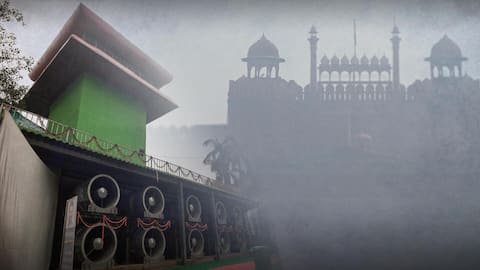Anti-smog tower shut in Delhi due to non-payment of salaries
What's the story
The anti-smog tower in Delhi's Connaught Place has been temporarily closed due to unpaid salaries for the staff operating the facility.
These workers, hired by the Delhi Pollution Control Committee (DPCC) after a Supreme Court order, haven't received payment since November 8.
On Sunday, Delhi's air quality index was measured at 333, placing it in the "very poor" category.
Details
Delhi minister blames bureaucracy for shutdown
Saurabh Bhardwaj, Minister of Health, Urban Development and Water, blamed bureaucracy for the tower's shutdown, stating that officials were disregarding ministers' orders and acting on their own accord.
He also mentioned that no action would be taken against them since all authority has been granted to a select few officials.
DPCC officials did not comment on the matter. The tower was installed in January 2020 following a Supreme Court order and inaugurated by Chief Minister Arvind Kejriwal in August 2021.
Solution
Experts argue smog towers are not a long-term solution
Experts have consistently argued that smog towers are not a sustainable solution to Delhi's air pollution problem.
They believe that thousands of such towers would be required throughout the city to make a significant impact on air quality.
A study by IIT-Bombay discovered that the tower's effective range is only about 500 meters and reduces particulate matter by 18%.
The study suggests operating the facility solely during winter and downsizing it.
Performance
IIT-Bombay suggests reducing tower size and optimizing fan design
The IIT-Bombay report also advised reducing the tower's overall size, as its current 24-meter height contributes to maintenance issues.
The tower contains 40 large fans that pull air from a unique canopy structure and release purified air below.
Each fan needs 25 horsepower, and the report recommends reevaluating the design with fewer fans, a shorter tower, and a smaller footprint, depending on the specific context where the air cleaner is to be deployed.
Working
How does an anti-smog tower work?
The fans at the top of the towers start this process off by creating a negative pressure that helps draw the contaminated air from above into the tower.
After that, the filters, consisting of macro and micro layers, capture particles ranging from smaller than 10 microns to approximately 0.3 microns in size.
After filtration, the purified air is released at a rate of 1,000 cubic meters per second.
